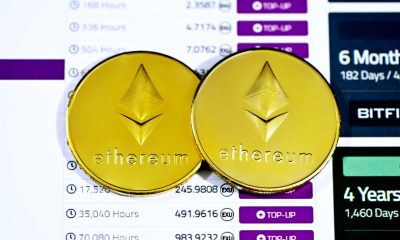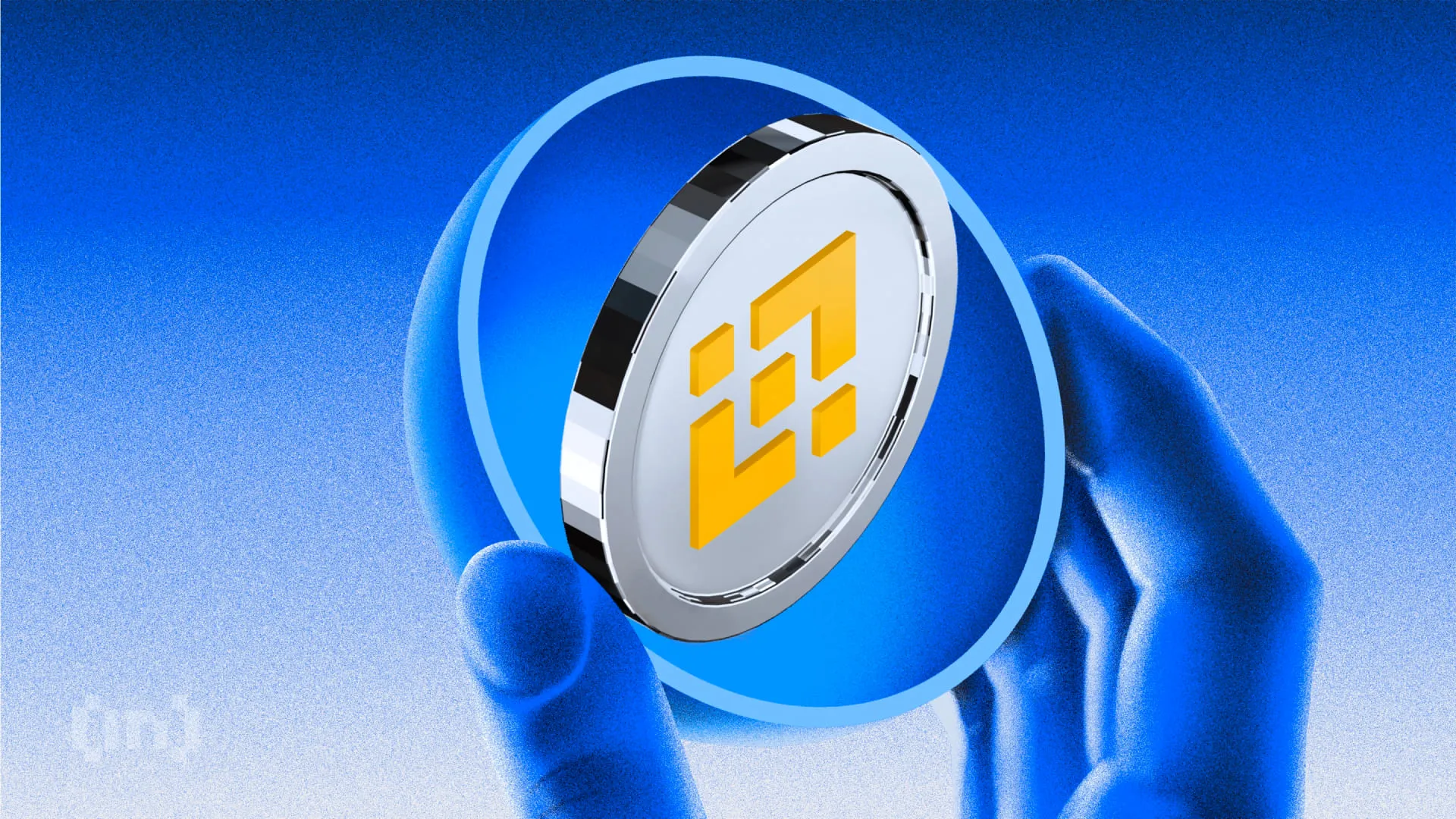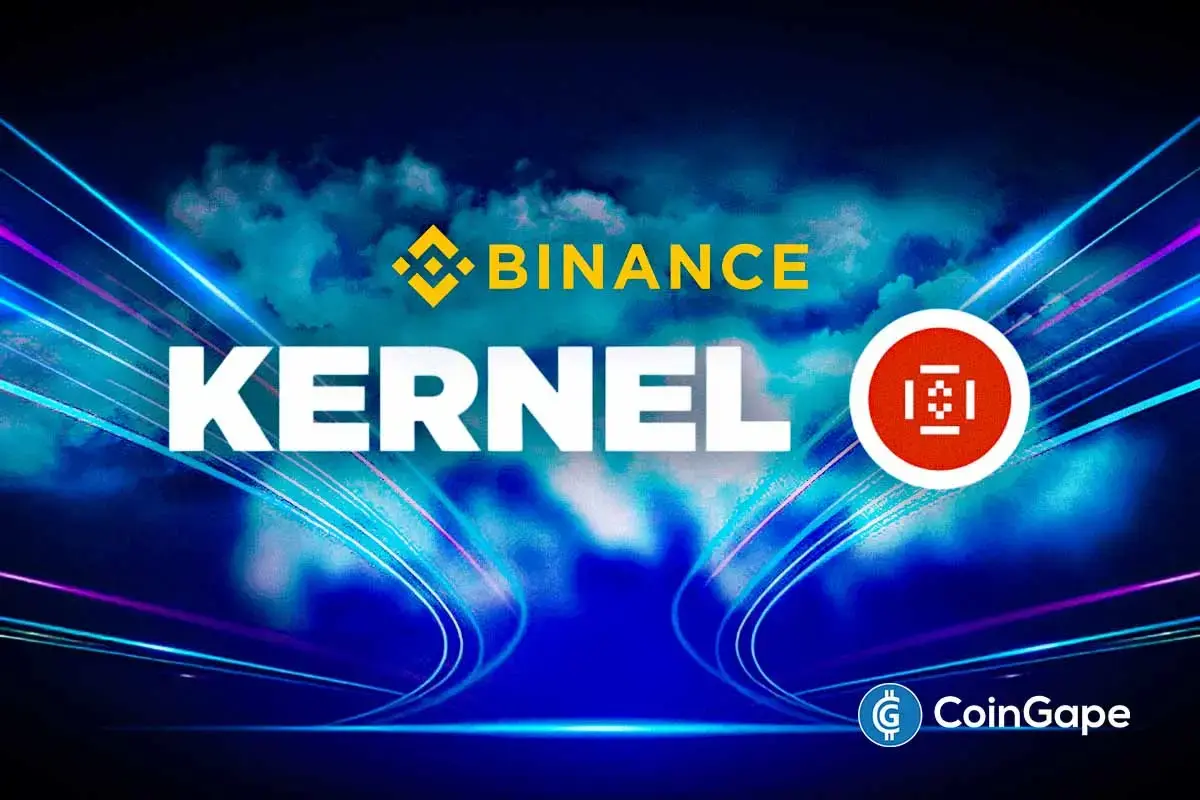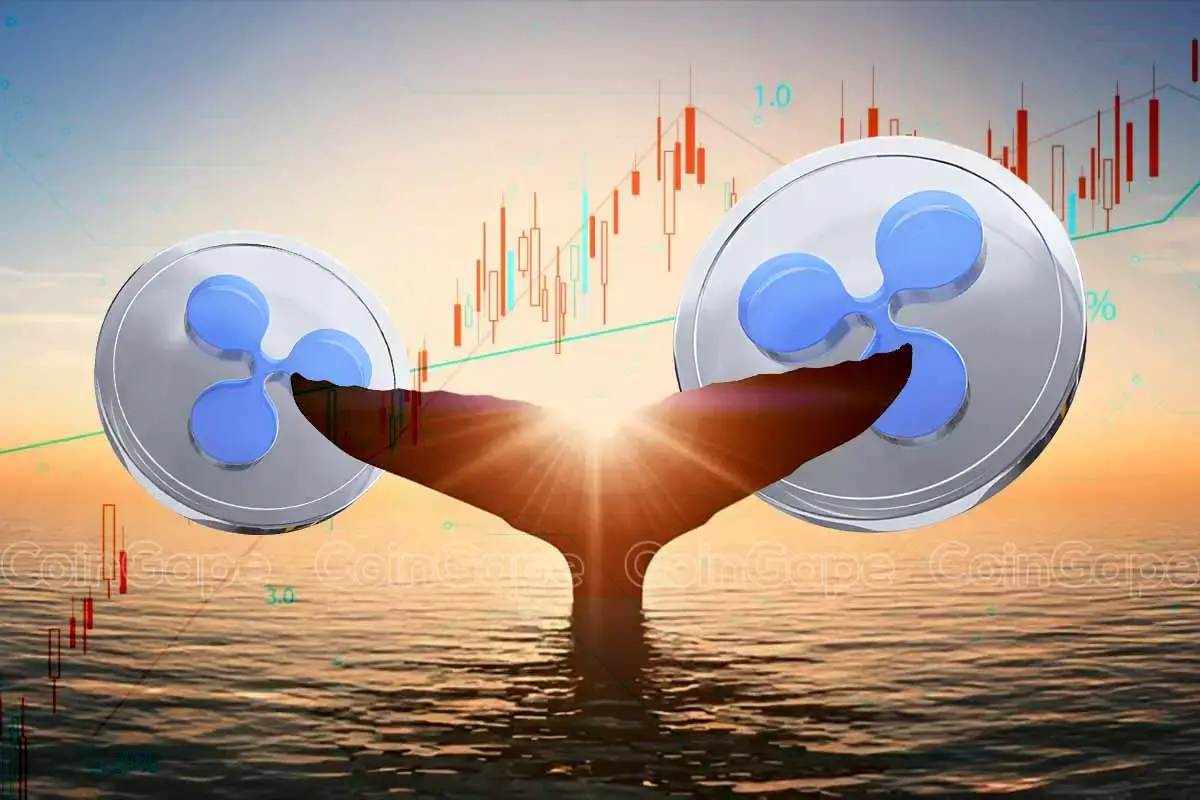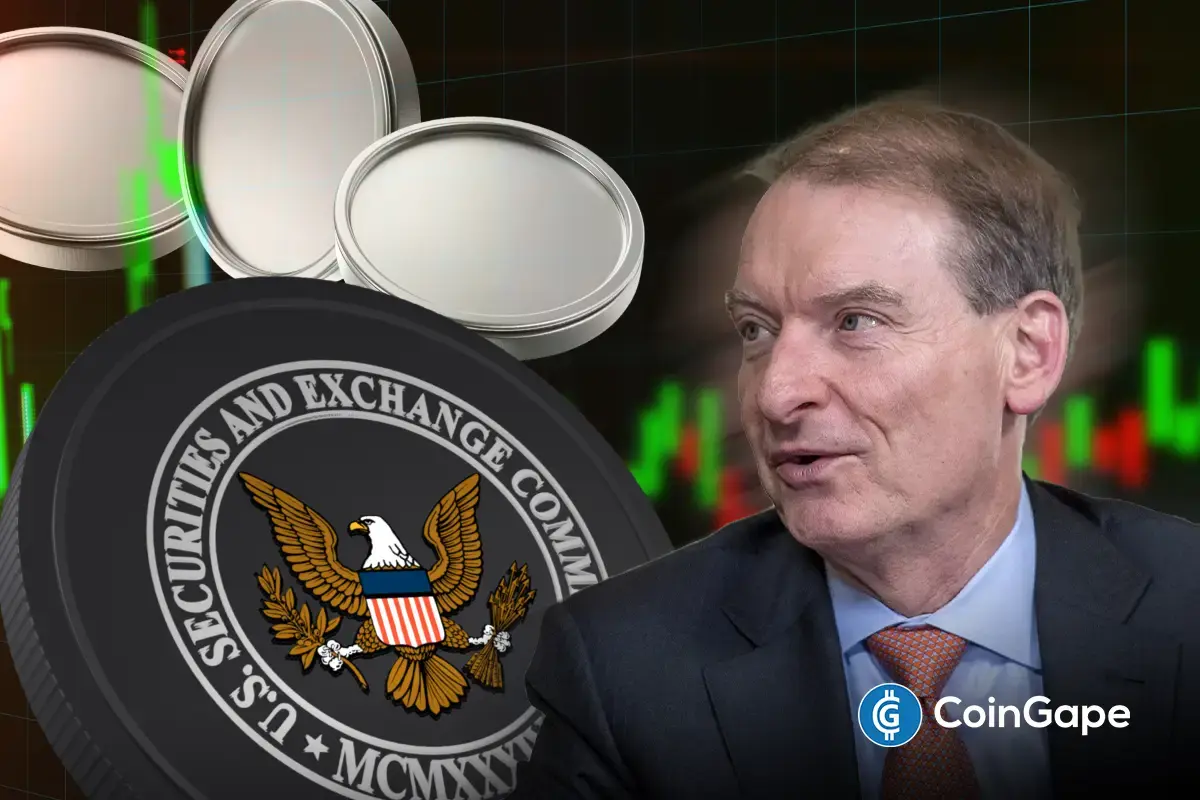Market
HMSTR, CATI on Binance Launchpool and More

This week in the crypto sphere brings exciting updates: Binance Launchpool introduces HMSTR and CATI, Ripple’s RLUSD might be limited to institutional investors, and significant legal developments involving Ripple and the SEC.
Additionally, a notable debate among presidential candidates on crypto policies and updates from the gaming platform Snek.fun offer a broader perspective on the current market climate.
Binance Launchpool Welcomes HMSTR and CATI
Binance’s Launchpool platform welcomed Hamster Kombat (HMSTR) and Catizen (CATI), marking significant additions that offer users new staking opportunities. On September 12, Binance announced that Hamster Kombat would become the 58th project on its Launchpool.
Hamster Kombat is a tap-to-earn game built on the Telegram mini-app platform. It provides a unique gaming experience in which players simulate crypto exchange CEOs in competitive battles. Hamster Kombat has a total token supply of 100,000,000,000 HMSTR, with 3% allocated for Launchpool token rewards.
Read more: What Is Hamster Kombat?
Users can stake Binance Coin (BNB) and First Digital USD (FDUSD) to receive HMSTR airdrops over three days starting September 23, 2024, at 00:00 UTC. Binance plans to list HMSTR on September 26, 2024, at 12:00 UTC, opening trading with HMSTR/USDT, HMSTR/BNB, HMSTR/FDUSD, and HMSTR/TRY pairs.
Following the HMSTR announcement, Binance revealed on September 13 that Catizen would be the 59th project on its Launchpool. Catizen is a cat-themed gaming bot built on the Telegram mini-app platform.
Since its inception six months ago, Catizen has attracted 34 million players and boasts over two million active on-chain users. The project reports an 800,000-paying user base and an average revenue per paying user of $33.
Catizen has a total and maximum token supply of 1,000,000,000 CATI, with 9% allocated for Launchpool token rewards. Users can stake BNB and FDUSD to receive CATI airdrops over four days starting September 16, 2024, at 00:00 UTC. Binance will list CATI on September 20, 2024, at 10:00 UTC, with trading pairs CATI/USDT, CATI/BNB, CATI/FDUSD, and CATI/TRY.
3 Much-Anticipated Upcoming Airdrops and TGE in TON Ecosystem
The Open Network (TON) has generated excitement with its airdrop initiatives. This September, TON is hosting several token generation events (TGE) and airdrops.
First, Catizen, one of TON’s key projects, is set to have its token, CATI, listed on major exchanges such as OKX, KuCoin, Bybit, and Gate.io starting September 20. Launched six months ago, Catizen has attracted 34 million players, with over two million active on-chain participants and 800,000 paying users, averaging $33 in revenue per paying user.
Next on the list is Hamster Kombat, another notable project that will hold its TGE and airdrop on September 26. Exchanges like Bitfinex, Bybit, and OKX will list the HMSTR token. However, the community has expressed concerns about the lack of clarity regarding airdrop criteria.
“The community is eager to participate, but the constant introduction of new games and features has caused confusion and overwhelm,” an X user said.
The CATS project also plans a TGE and airdrop this month, though the exact date remains unspecified. With more than 20 million users, CATS aims to reward Telegram users based on account age and activity level, with all Telegram users eligible to participate. A dedicated bot will assess user statistics to determine token allocation, and additional tokens can be earned through a referral system and minor tasks.
RLUSD Stablecoin and Ripple Legal Developments
Ripple’s Chief Technology Officer, David Schwartz, confirmed on September 8 that the upcoming RLUSD stablecoin would likely be available exclusively to institutional investors. In a social media exchange, Schwartz responded to an XRP user who suggested that RLUSD should be limited to large financial institutions to prevent misuse in illegal activities such as money laundering. He compared RLUSD to existing stablecoins like USDC and USDT, noting that individual investors typically cannot purchase these stablecoins directly from their issuers.
“Probably only ever be available directly to institutions. Can you get USDC from Circle or USDT from Tether, because I can’t.” Schwartz stated.
In a separate but related development, the US Securities and Exchange Commission (SEC) dropped its claims against Ripple executives Brad Garlinghouse and Chris Larsen. This action has sparked rumors of an appeal, especially since Ripple proposed to deposit 111% of the financial judgment into a bank account, presumably to ensure a pause in the case.
A former SEC regional director, Marc Fagel, provided insights into the potential appeal. He emphasized Ripple’s systematic sales rather than debating XRP’s classification as a security.
“If [the SEC chooses to] appeal, it will likely be over whether the programmatic sales constituted securities sales,” Fagel explained.
Furthermore, he clarified that the Court of Appeals could address this issue without deciding whether XRP is a security, as it remains a peripheral matter. Legal expert Bill Morgan also commented on the case, assuring XRP holders that the core judgment—that XRP is not a security—should stand firm despite potential legal maneuvering.
Cardano’s Network Activity Surges with Meme Coin Launchpad Snek.fun
Charles Hoskinson, the founder of Cardano, praised Snek.fun, a meme coin launchpad, for significantly increasing the network’s activity. On September 6, Snek.fun announced a record daily transaction volume for Cardano. This marked the highest 24-hour decentralized exchange (DEX) trading activity in the blockchain’s history.
Launched on September 5, Snek.fun is a meme coin launchpad created by SNEK and Splash, a DEX on Cardano. The platform allows users to create tokens for a fee of 25 ADA.
Once 75% of a token’s supply is purchased, and the market cap reaches 42,069 ADA, a bonding curve is triggered, adding 25% of the supply to a liquidity pool on Splash DEX. Liquidity provider (LP) tokens are then burned to prevent the team from withdrawing liquidity.
Snek.fun initially faced challenges due to high user demand and network congestion. However, it was able to optimize its platform quickly. Within the first 24 hours, over 2,000 tokens were created, and trading volume exceeded 5 million ADA.
Regardless of the achievement, some analysts express concerns about the platform’s long-term viability. They stress the need for additional features, such as creator royalties and messaging systems, to ensure sustained success.
Presidential Debate Omits Crypto Discussion, Impacting PolitiFi Coins
This week also witnessed the first presidential debate between Vice President Kamala Harris and former President Donald Trump. Despite the mounting anticipation, the debate apparently ended without any mention of cryptocurrencies, leaving many crypto enthusiasts disappointed. Instead, the debate focused on topics such as the economy, immigration, and foreign policy.
However, the absence of discussions on crypto had immediate repercussions on the market. Following the debate, the crypto market reacted sharply, particularly affecting meme coins associated with politics—known as PolitiFi.
BeInCrypto reported that the total market capitalization of PolitiFi meme coins fell by 8.7% post-debate. Moreover, some Trump-linked meme coins suffered significant declines. For instance, MAGA (TRUMP) dropped by 10%, while MAGA Hat (MAGA) plummeted by 22.5%.
Read more: 7 Hot Meme Coins and Altcoins that are Trending in 2024
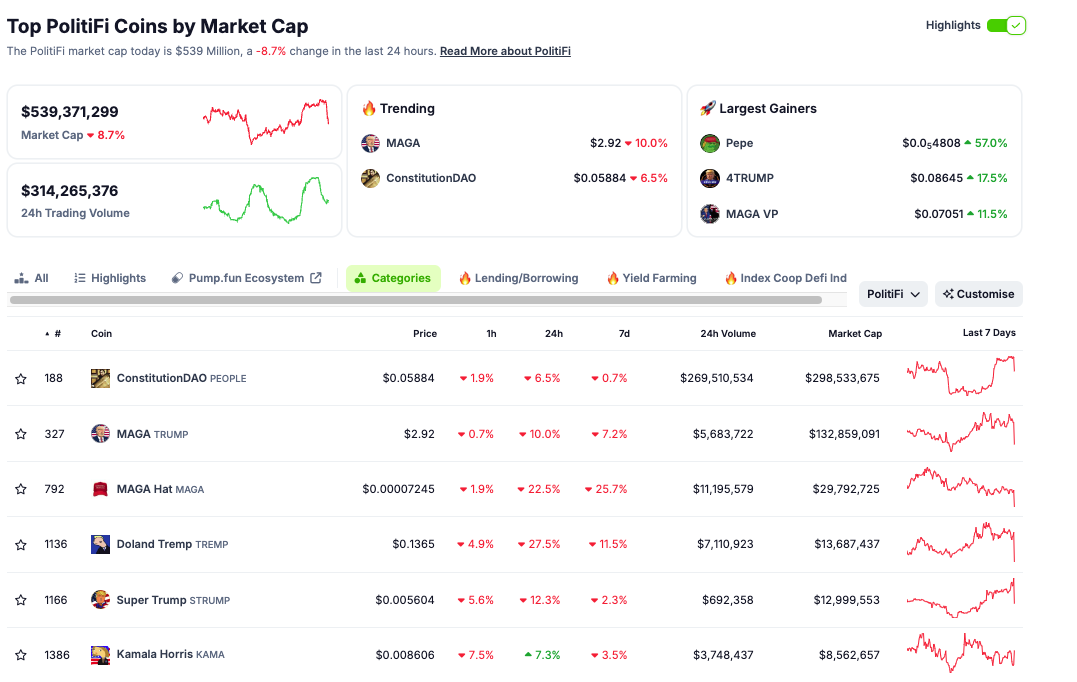
Conversely, the Kamala Horris (KAMA), a meme coin related to Kamala Harris, surged by 7.3%.
Disclaimer
In adherence to the Trust Project guidelines, BeInCrypto is committed to unbiased, transparent reporting. This news article aims to provide accurate, timely information. However, readers are advised to verify facts independently and consult with a professional before making any decisions based on this content. Please note that our Terms and Conditions, Privacy Policy, and Disclaimers have been updated.
Market
Top 3 Exchange Tokens to Keep An Eye For April 2025

Bitget (BGB), Cronos (CRO), and 1INCH are three of the top exchange tokens to watch in April 2025. BGB is down 4% this week after a massive rally in late 2024, while CRO has dropped nearly 10% amid broader market weakness tied to the tariff war.
1INCH has also fallen over 5%, impacted by Ethereum’s continued decline. Despite the pullbacks, each token has key catalysts ahead that could drive a reversal—or deepen the correction.
Bitget (BGB)
BGB token has drawn significant attention in recent months, rallying 434% between December 1 and December 27, 2024.
However, after reaching that peak, momentum began to cool, and the token is now down 12% over the last seven days. This pullback comes as traders reassess the token’s near-term potential following its explosive run.
Despite that correction, Bitget Token continues to be one of the biggest exchange tokens in the market, with a market cap of $4.8 billion.

In Q1 2025, Bitget burned 30 million BGB tokens, following a much larger 800 million burn in late 2024—cutting total supply by 40% in a move aimed at boosting long-term value through deflation. BGB has also expanded its utility, now supporting multi-chain gas fees and real-world payments, pushing its use cases beyond the Bitget ecosystem.
If the current correction reverses, Bitget Token could test resistance at $4.40, with a potential push to $4.69 if broken.
Conversely, if the selloff deepens, support around $3.72 could be tested, and a break below that would mark the token’s first drop beneath $3.70 since December 2024.
Cronos (CRO)
CRO, Crypto.com’s native token, is down nearly 22% over the past seven days, making it one of the worst performers among major exchange tokens this week.
The decline comes as broader crypto markets react sharply to the escalating tariff war, which has triggered a wave of risk-off sentiment across both traditional and digital assets.
Crypto.com had ambitious plans for 2025, including talk of a potential CRO ETF, but with market conditions deteriorating, the viability of these milestones remains uncertain.
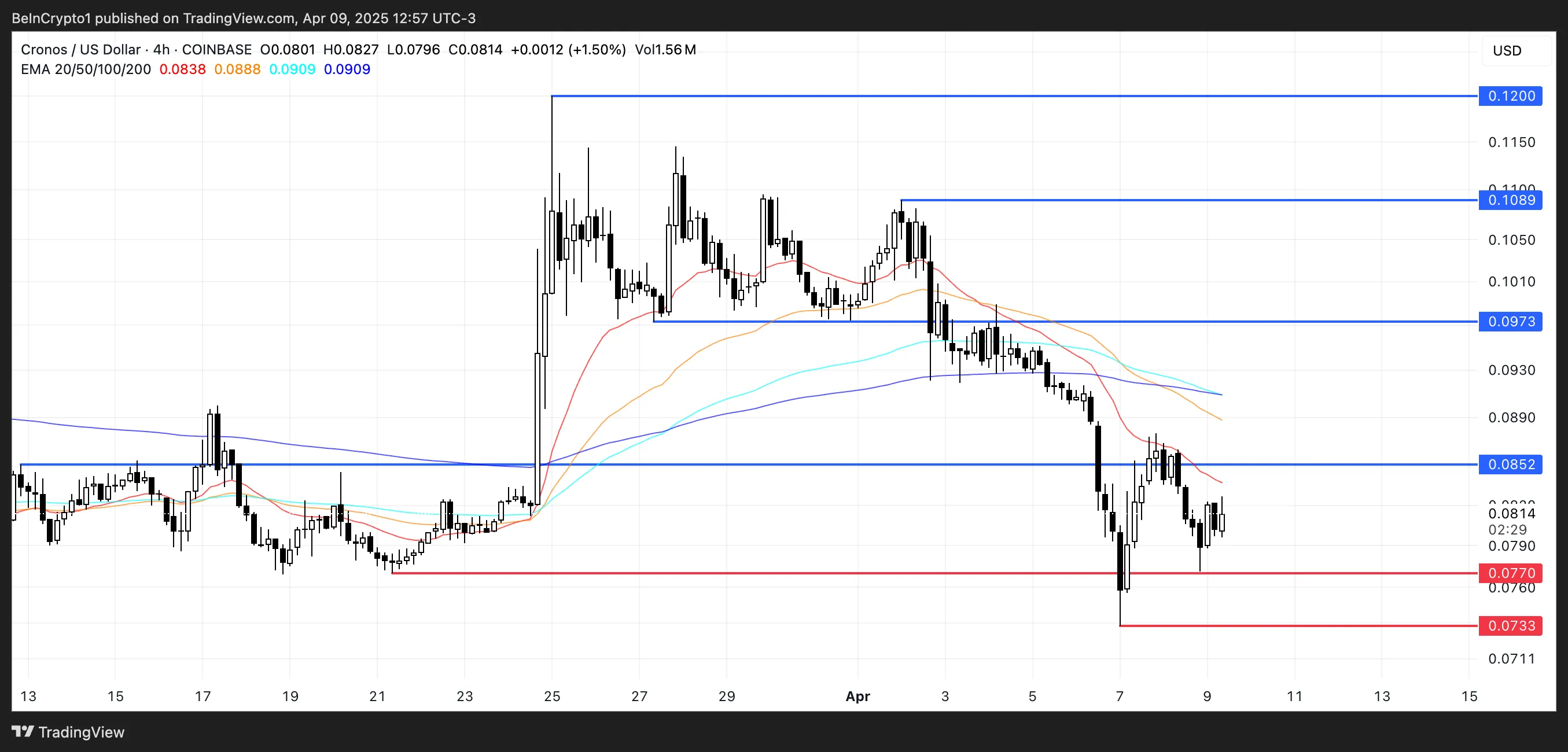
Technically, Cronos’ EMA lines have formed two death crosses in recent days—a strong bearish signal. If the downtrend persists, CRO could fall to test support at $0.077, and if that level breaks, drop further to $0.073.
However, if market sentiment rebounds—especially if boosted by Crypto.com’s partnership with Trump Media—CRO could recover sharply, making it one of the most relevant exchange tokens in the market.
Key upside targets include $0.085, followed by $0.097, $0.108, and potentially $0.12 if bullish momentum strengthens.
1INCH
1INCH remains one of the most important DEX aggregators in the crypto space, even as it operates at a much smaller scale compared to rivals like Jupiter, which sees roughly five times more trading volume.
It also faces rising competition from newer players like CoWSwap, putting pressure on its dominance in the sector.
Despite its strong fundamentals and reputation, 1INCH has seen its token price drop more than 17% over the last seven days, bringing its market cap down to $221 million.

The ongoing downturn in the Ethereum ecosystem, with ETH now trading below $1,500 and at risk of dropping toward $1,000, has had a significant impact on aggregators like 1INCH.
If the correction deepens, 1INCH could test support near $0.148.
However, a rebound in Ethereum activity could quickly reverse the trend, potentially pushing 1INCH to retest resistance at $0.177 and, if broken, rally toward $0.198 and even $0.22.
Disclaimer
In line with the Trust Project guidelines, this price analysis article is for informational purposes only and should not be considered financial or investment advice. BeInCrypto is committed to accurate, unbiased reporting, but market conditions are subject to change without notice. Always conduct your own research and consult with a professional before making any financial decisions. Please note that our Terms and Conditions, Privacy Policy, and Disclaimers have been updated.
Market
Solana (SOL) Drops 4% as Selling Pressure Intensifies

Solana (SOL) has recovered over 12% today after Trump announced a 90-day pause on tariffs. Despite the significant recovery, technical indicators continue flashing bearish warnings. Key indicators like the RSI, BBTrend, and EMA lines all point to weakening momentum and a lack of buyer conviction. While oversold conditions have started to stabilize, the broader structure still leans slightly in favor of sellers.
Solana RSI Shows The Lack Of Conviction Among Buyers
Solana’s Relative Strength Index (RSI) is currently sitting at 45.52, hovering in neutral territory but remaining below the midline of 50 for nearly two days.
This comes after the RSI briefly dipped to an oversold level of 21.53 two days ago, indicating that sellers had briefly dominated before demand began to stabilize.
The RSI’s slow climb back toward neutral suggests that while extreme selling pressure has eased, bullish momentum has not yet taken control.

The RSI is a momentum oscillator that measures the speed and magnitude of recent price movements. It typically ranges from 0 to 100.
Readings above 70 are generally interpreted as overbought, signaling the potential for a pullback, while readings below 30 suggest oversold conditions and potential for a rebound.
Solana’s RSI at 45.52 indicates that the asset is in a recovery phase but lacks conviction. If the RSI fails to cross above 50 soon, it could imply continued hesitation among buyers and the potential for sideways price action or even another leg lower.
SOL BBTrend Has Reached Its Lowest Levels In Almost A Month
Solana’s BBTrend indicator is currently at -14.19, having turned negative since yesterday, and is at its lowest level since March 13—nearly a month ago.
This shift into deeper negative territory suggests that bearish momentum is building once again after a period of relative stability.
The return to these levels may indicate growing downside pressure, especially if follow-through selling continues in the short term.

The BBTrend (Bollinger Band Trend) is a volatility-based indicator that measures the strength and direction of a price trend using the distance between price and Bollinger Bands.
Positive BBTrend values generally reflect bullish momentum, while negative values signal bearish momentum. The deeper the reading into negative territory, the stronger the downward pressure is considered to be.
Solana’s BBTrend is now at -14.19, implying an intensifying bearish phase, which could mean further price declines unless sentiment or volume shifts quickly in favor of buyers.
Will Solana Dip Below $100 Again In April?
Solana’s EMA setup continues to reflect a strong bearish structure, with short-term moving averages remaining well below long-term ones.
This alignment confirms that downward momentum is still in control, keeping sellers in a dominant position.
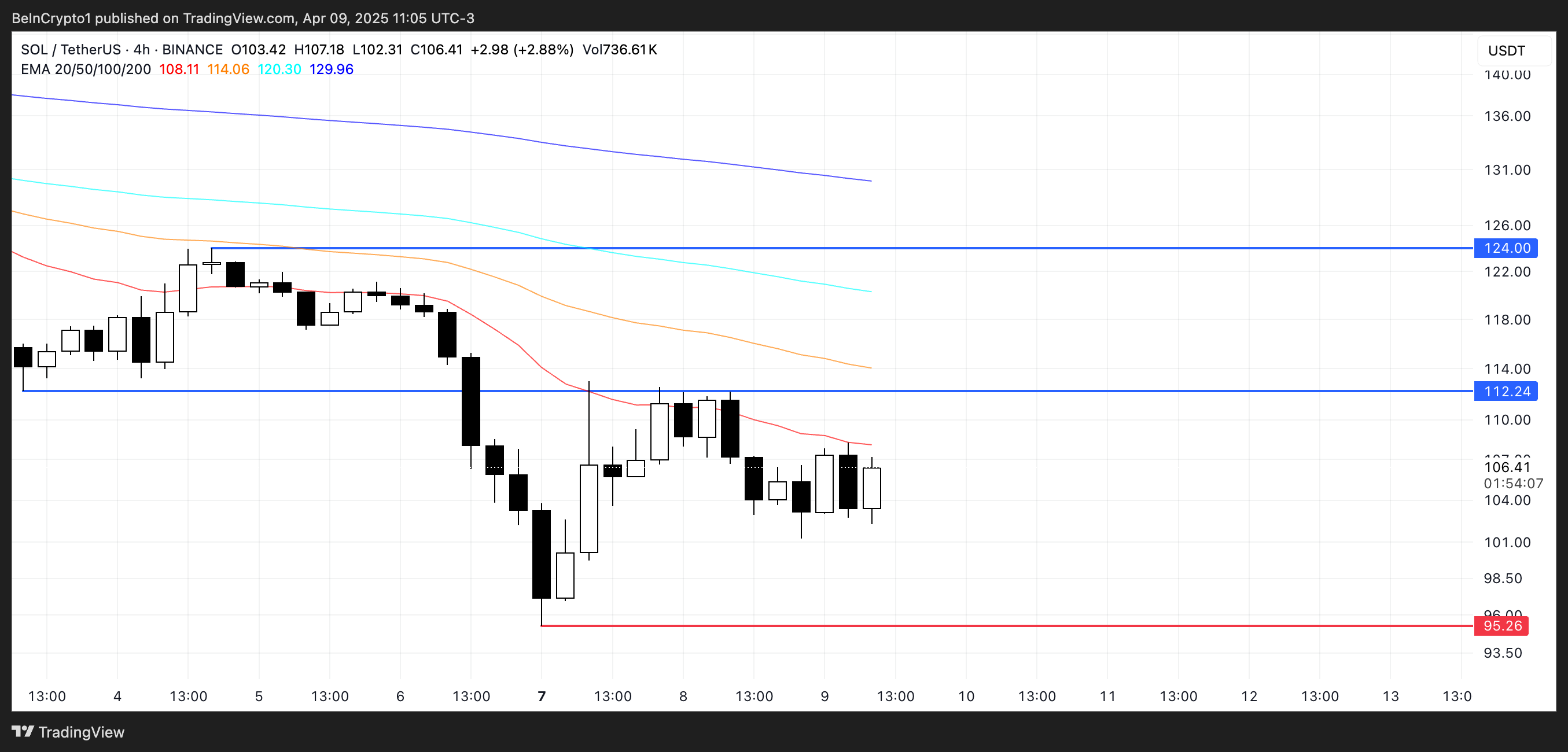
However, if Solana price manages to sustain the current strength and buying interest, it could test resistance at $120. A break above that level may open the path toward the next target at $134.
On the downside, if the current bearish trend persists, Solana could revisit support near $95, a level that has previously acted as a short-term floor.
Losing this level would be technically significant, potentially pushing SOL below $90—territory not seen since January 2024.
Disclaimer
In line with the Trust Project guidelines, this price analysis article is for informational purposes only and should not be considered financial or investment advice. BeInCrypto is committed to accurate, unbiased reporting, but market conditions are subject to change without notice. Always conduct your own research and consult with a professional before making any financial decisions. Please note that our Terms and Conditions, Privacy Policy, and Disclaimers have been updated.
Market
Paul Atkins Confirmed as SEC Chair, Crypto Rules to Ease


The US Senate has confirmed Paul Atkins as the new chair of the Securities and Exchange Commission. Senators approved the appointment on Wednesday with a 52-44 vote.
Atkins is expected to shift the agency’s approach to financial oversight. He plans to ease regulatory requirements, scale back corporate disclosure rules, and continue the commission’s new pro-crypto stance.
SEC Has a Pro-Crypto Chair
Since last week’s Senate hearing, there have been some doubts about Paul Atkins’ appointment. This was largely due to his significant crypto exposure as an investment leader.
However, the Senate has decided today with a tight vote.
The leadership change follows a period of major transition at the agency. Mark Uyeda, who served as acting chair after Gensler’s departure, launched a fast-paced overhaul of crypto policy.
“Confirmed, 52-44: Confirmation of Executive Calendar #61 Paul Atkins to be a Member of the Securities and Exchange Commission for the remainder of the term expiring June 5, 2026,” wrote the Senate Cloakroom.
Under Uyeda, the SEC dismissed several major enforcement actions tied to digital assets. The agency also declared that certain crypto sectors — including stablecoins, proof-of-work mining, and meme coins fall outside its jurisdiction.
Some of these areas have financial links to the Trump family. Their ventures include meme coin projects and connections to World Liberty Financial, a firm backing its own stablecoin.
Atkins is expected to formalize these regulatory shifts and oversee any new standards that may follow from pending legislation.
“Atkins may have made history tonight as the first SEC commissioner to get confirmed by the Senate three times. Once in 2002, then again in 2003, and now in 2025,” wrote Eleanor Terrett.
The SEC has already begun loosening several other rules. Uyeda delayed implementation deadlines for policies introduced during Gensler’s term.
He also revised rules on shareholder proposals, making it harder for activists to force issues onto corporate ballots.
The agency withdrew its defense of rules that required companies to disclose climate-related risks and emissions.
Atkins will take over a smaller agency. Around 500 staff have accepted voluntary resignations or buyouts. This has been part of the Trump administration’s broader effort to shrink federal agencies.
Disclaimer
In adherence to the Trust Project guidelines, BeInCrypto is committed to unbiased, transparent reporting. This news article aims to provide accurate, timely information. However, readers are advised to verify facts independently and consult with a professional before making any decisions based on this content. Please note that our Terms and Conditions, Privacy Policy, and Disclaimers have been updated.
-
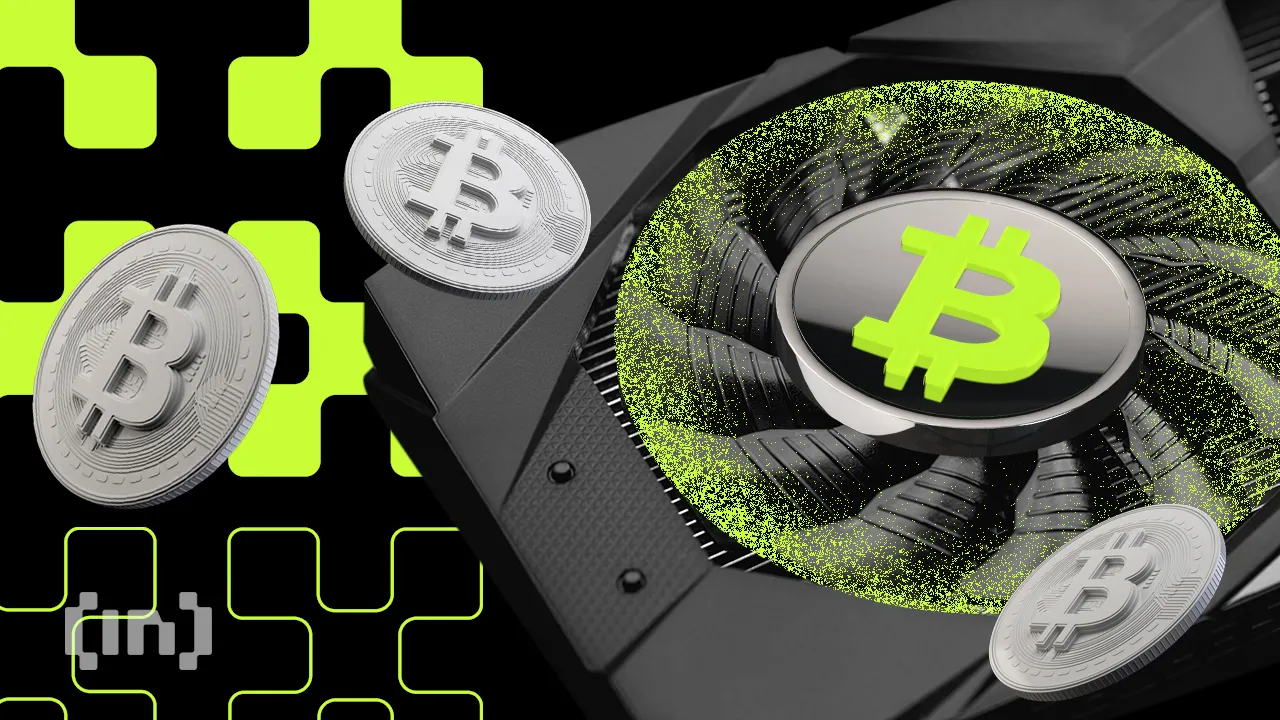
 Bitcoin21 hours ago
Bitcoin21 hours agoHow Trump’s Tariffs Threaten Bitcoin Mining in the US
-
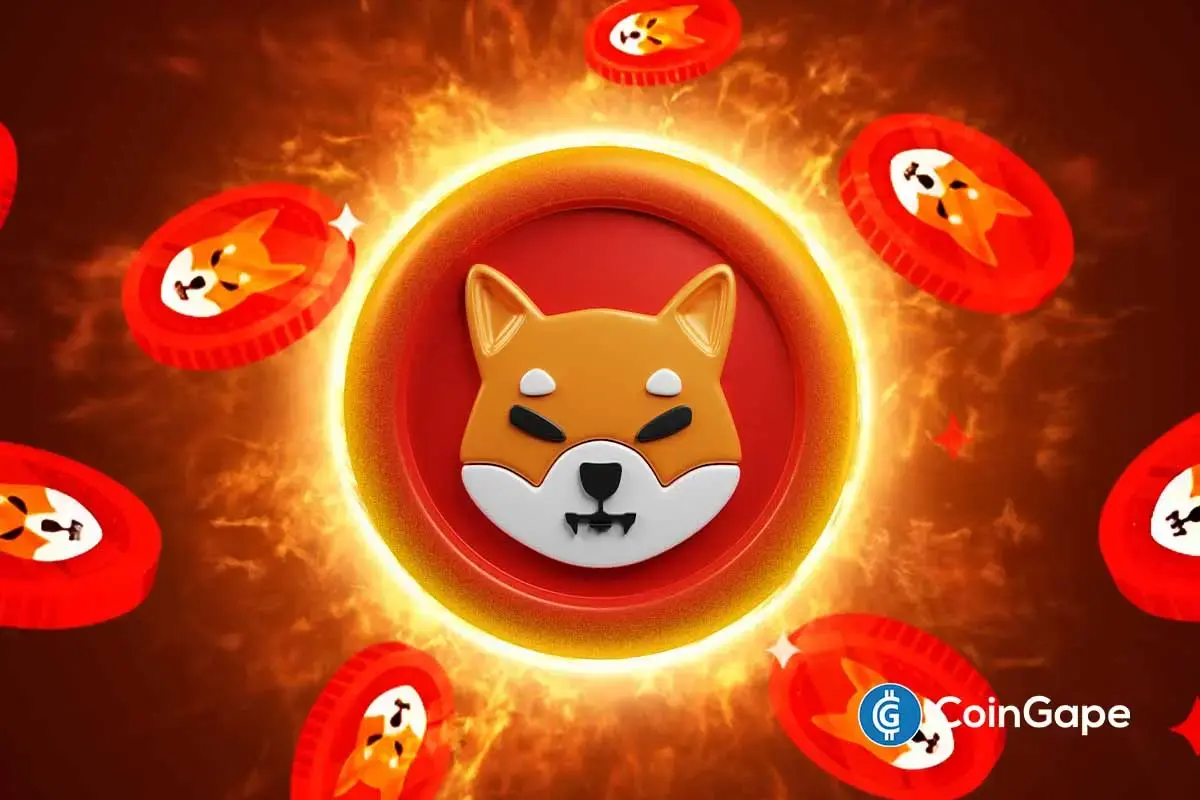
 Altcoin21 hours ago
Altcoin21 hours agoShiba Inu Burn Rate Shoots Up 1500%, Can SHIB Price Recover After Bloodbath?
-

 Market18 hours ago
Market18 hours agoXRP Price Warning Signs Flash—Fresh Selloff May Be Around the Corner
-
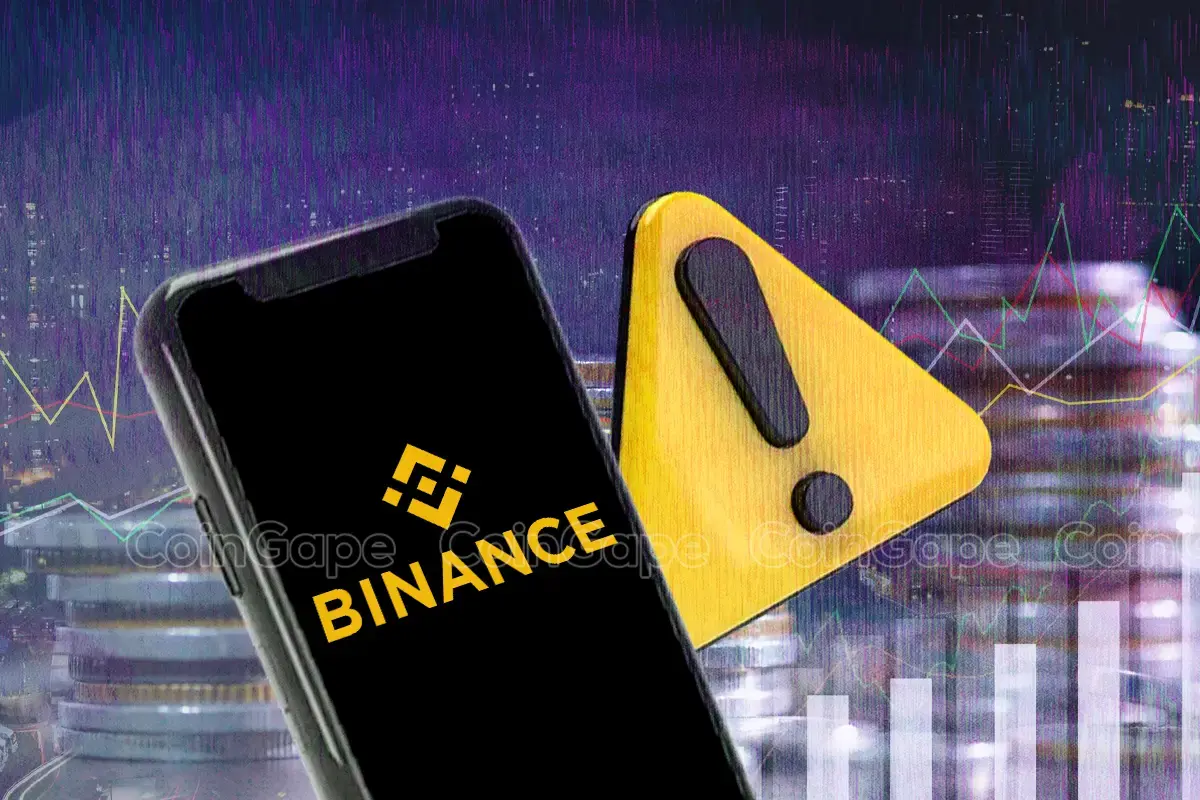
 Altcoin18 hours ago
Altcoin18 hours agoBinance To Delist These 7 Crypto Pairs Amid Market Turmoil, Are Prices At Risk?
-

 Market24 hours ago
Market24 hours agoBitcoin Price Takes Another Tumble—Is The Floor About to Crack?
-

 Bitcoin17 hours ago
Bitcoin17 hours agoWhy Bitcoin’s Value Could Benefit from Trade War, Analyst Explains
-

 Market23 hours ago
Market23 hours agoRFC, FARTCOIN, MOG Lead Gains
-

 Ethereum22 hours ago
Ethereum22 hours agoAnalyst Reveals What Could Come Next


